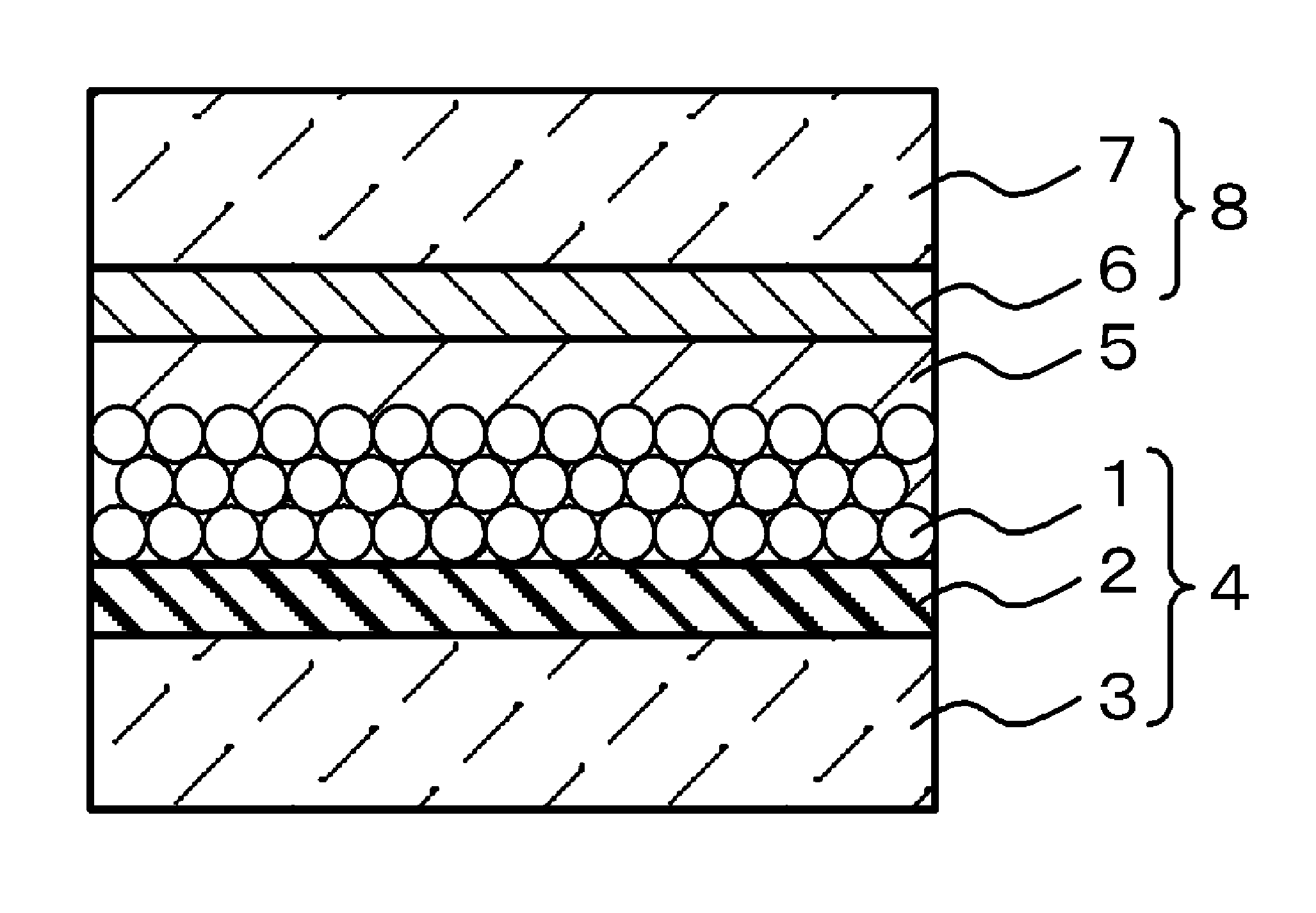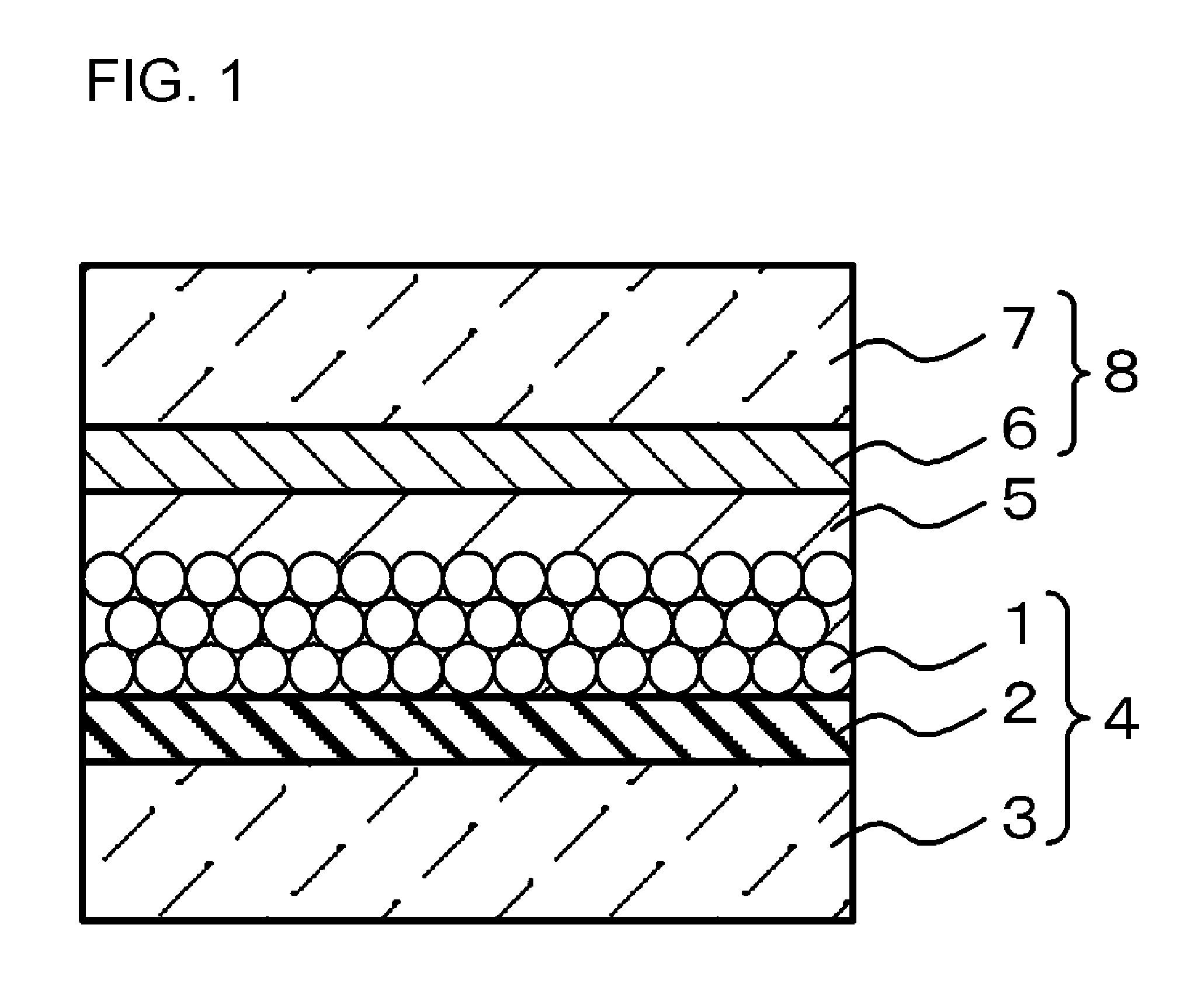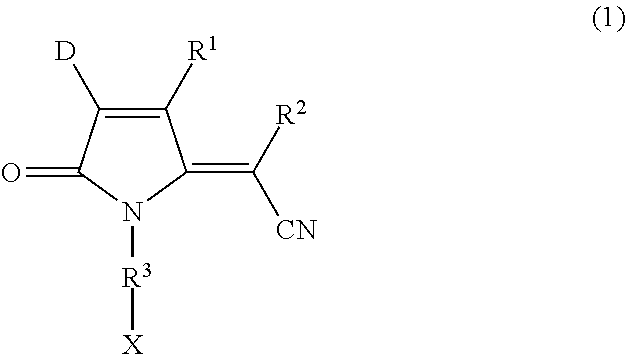Dye for photoelectric conversion, semiconductor electrode, photoelectric conversion element, solar cell, and novel pyrroline-based compound
a photoelectric conversion and compound technology, applied in the direction of thiazine dyes, metal/polymethine dyes, electrolytic capacitors, etc., can solve the problems of high cost of solar cells, inability to use solar cells widely, and inability to achieve high photoelectric conversion efficiency, and high molar absorbance coefficient
- Summary
- Abstract
- Description
- Claims
- Application Information
AI Technical Summary
Benefits of technology
Problems solved by technology
Method used
Image
Examples
example 1
Synthesis of Pyrroline-Based Compound P1
[0085]
[0086]A 4-cyano-5-dicyanomethylene-3-hydroxy-2-oxo-3-pyrroline-disodium salt (U.S. Pat. No. 3,013,013) (7.5 g) and 8.25 g of N,N-dibutylaniline (manufactured by Wako Pure Chemical Industries, Ltd., product code 048-07803) were dissolved in 75 ml of N,N-dimethylformamide (manufactured by Wako Pure Chemical Industries, Ltd., product code 045-02916). Phosphorous oxychloride (manufactured by Wako Pure Chemical Industries, Ltd., product code 165-02282) was added dropwise thereto in a quantity of 15 g under ice cooling, followed by stirring for an hour under ice cooling and for another 4 hours at ambient temperature. The reaction mixture was poured into 1000 ml of ice water, and the precipitated crystals were filtered and washed several times with hot water. Subsequently, the resultant was stirred and washed three times under heating in 200 ml of ethanol (for industrial use, manufactured by KANTO KAGAKU) / acetonitrile (manufactured by Wako Pure...
example 2
Synthesis of Pyrroline-Based Compound P2
[0091]
[0092]A pyrroline-based compound P2 was synthesized in the same manner as in Example 1. Here, N,N-dodecyl-N-methylaniline (synthesized by the method disclosed in Bull. Chem. Soc. Jpn., 68, pp 929-934 (1995)) was used instead of N,N-dibutylaniline.
[0093]Results of 1H-NMR (acetone-d6) measurement of the obtained compound were as follows. That is, δ was 11.2-12.7 (1H, br), 8.49 (2H, d), 7.02 (1H, d), 4.93 (2H, s), 3.66 (4H, t), 3.28 (s, 3H), 1.7-1.75 (m, 2H), 1.2-1.45 (m, 18H), 0.86 (3H, t).
[0094]λmax of the obtained dye in acetonitrile was 638 nm.
example 3
Synthesis of Pyrroline-Based Compound P3
[0095]
[0096]A pyrroline-based compound P3 was synthesized in the same manner as in Example 1. Here, N-octylindole (synthesized based on the method disclosed in J. Chem. Research(S), PP 88-89, 1984) was used instead of N,N-dibutylaniline.
[0097]Results of 1H-NMR (acetone-d6) measurement of the obtained compound were as follows. That is, δ was 11.2-12.7 (br, 1H), 8.76 (s, 1H), 8.30 (d, 1H), 7.75 (d, 1H), 7.39-7.47 (m, 2H), 5.00 (s, 2H), 4.51 (t, 2H), 1.97 (t, 2H), 1.2-1.47 (m, 18H), 0.84 (t, 3H).
[0098]λmax of the obtained dye in acetonitrile was 549 nm.
PUM
| Property | Measurement | Unit |
|---|---|---|
| thickness | aaaaa | aaaaa |
| thickness | aaaaa | aaaaa |
| thickness | aaaaa | aaaaa |
Abstract
Description
Claims
Application Information
 Login to View More
Login to View More - R&D
- Intellectual Property
- Life Sciences
- Materials
- Tech Scout
- Unparalleled Data Quality
- Higher Quality Content
- 60% Fewer Hallucinations
Browse by: Latest US Patents, China's latest patents, Technical Efficacy Thesaurus, Application Domain, Technology Topic, Popular Technical Reports.
© 2025 PatSnap. All rights reserved.Legal|Privacy policy|Modern Slavery Act Transparency Statement|Sitemap|About US| Contact US: help@patsnap.com



